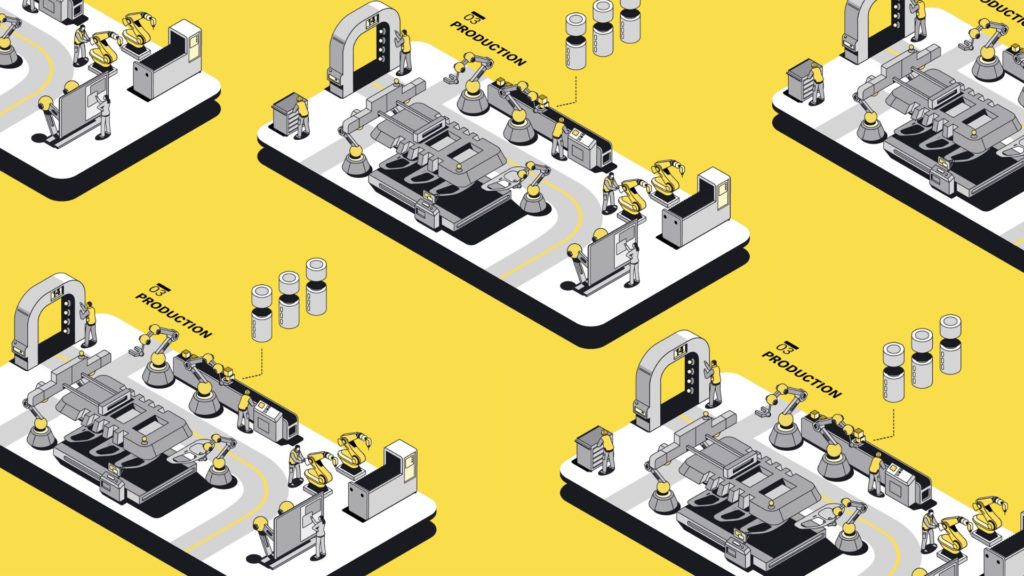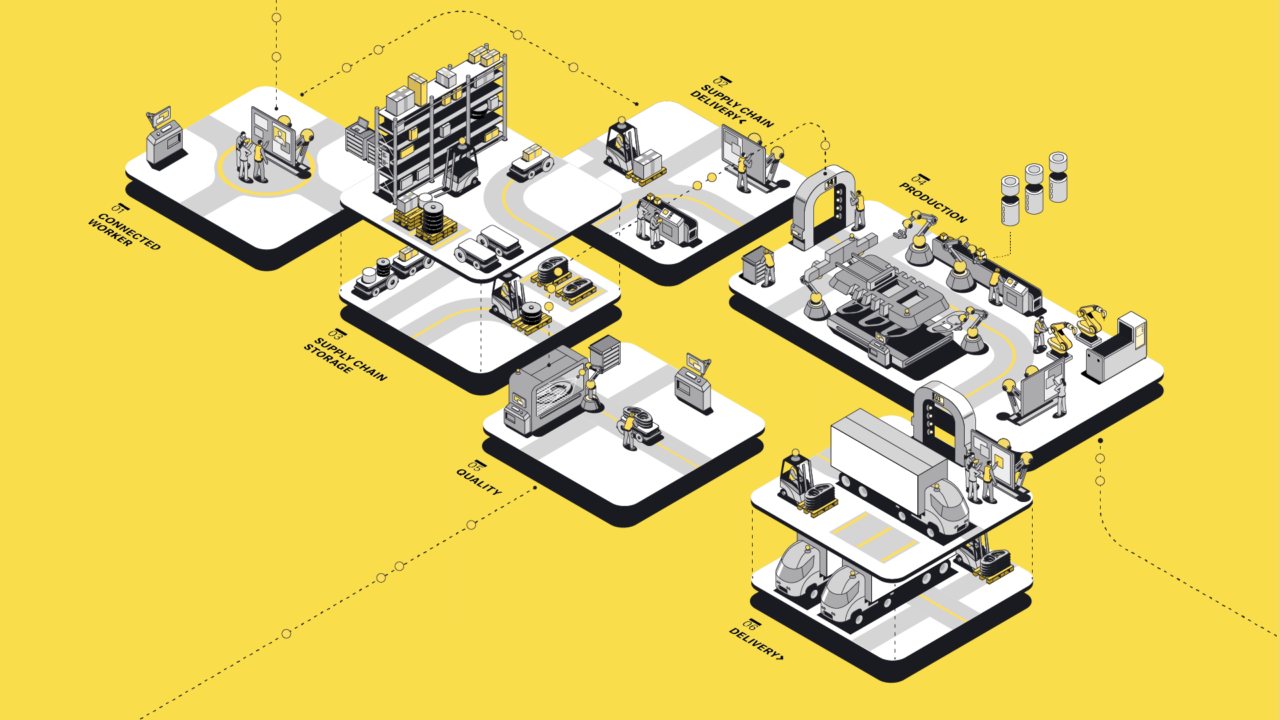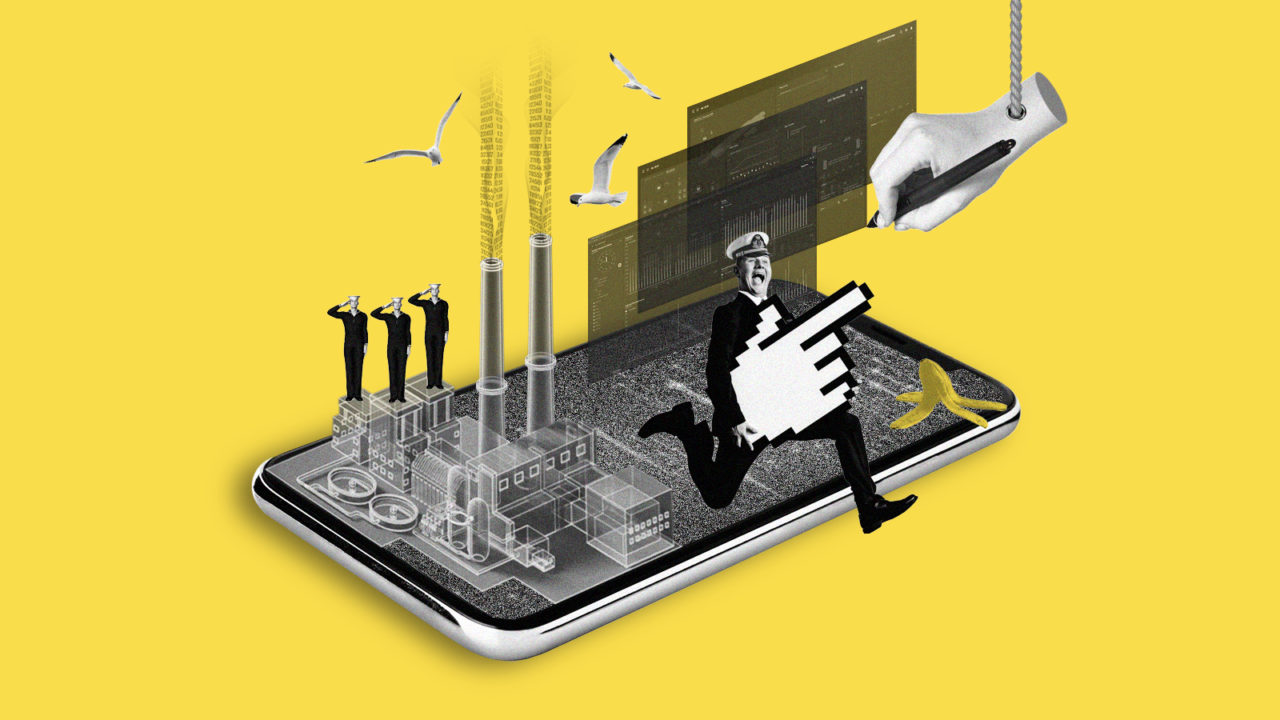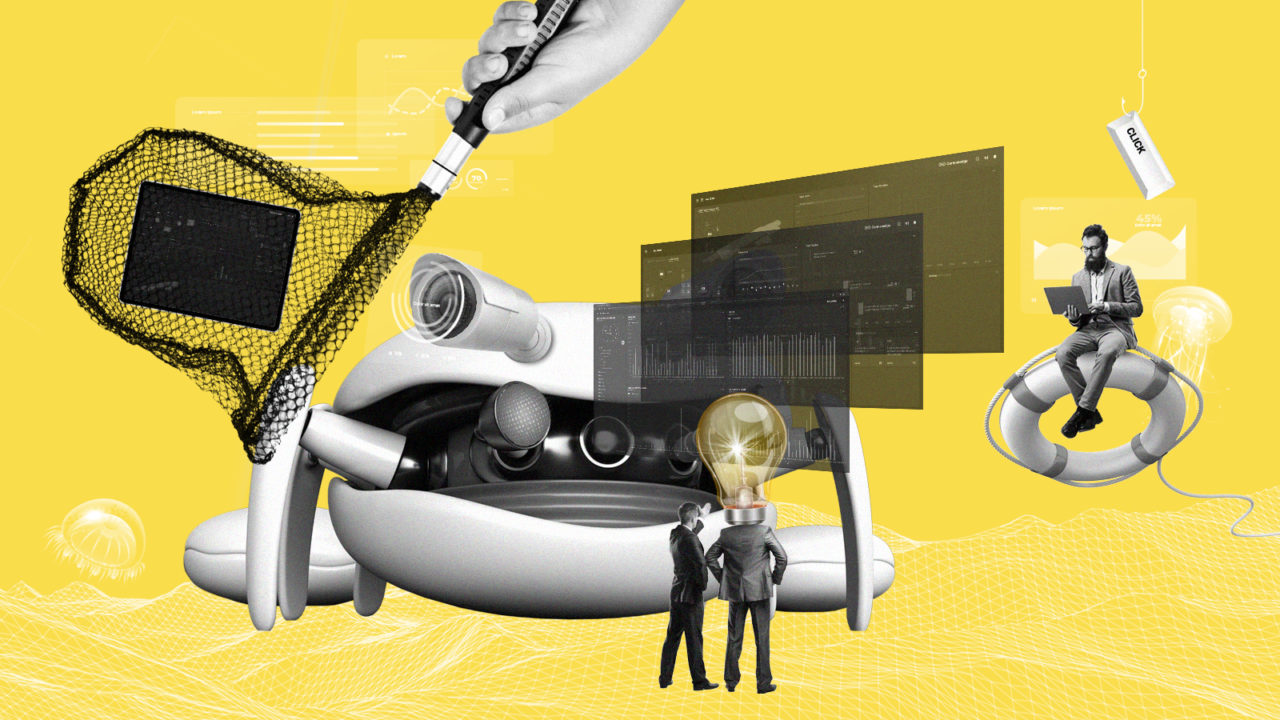Scaling works on many different levels: speed, quantity, human machine interaction. Once the basics are set scaling is possible fast and most of all modularized.
Scaling the Dimension Speed
Nowadays you need to be able to adapt to new circumstances quickly. A factory can suddenly receive an order and can have to produce many car bodies in short time. Then it is important to work at short notice and reduce the time-to-benefit.
It is not unthinkable that 250 new assets will have to be incorporated in an existing system during a weekend. The additional assets create new resources to fulfill the order within the delivery period. A Machine Execution System delivers the basis to incorporate assets in a short time.
Scaling the Dimension Quantity
You can start with only two assets and then scale up step by step. The biggest system we have ever installed at a single factory of a client involved 2.300 assets – and that surpasses systems from our competition as well, by the way.
That took its time. Between three and four years to be exact. And it cost the client a small seven-digit amount. But the result is extraordinary: An increase of efficiency by 2.5%. If you produce 800,000 motors a year that makes an enormous difference. The increase of efficiency was possible partly because our MES detects problems and identifies weaknesses.
Scaling the Dimension HMI
Even if the term “digital factory” sounds as if it is intended to replace the human worker, the latter is still essential. The digital factory needs the human worker – and in our opinion it’s the same the other way around. For both to work together optimally, human-machine interaction must be adapted to individual needs – and this is precisely where modern HMI software comes in, making this exchange intuitive and efficient.
Once that has been done you win with every single scaling action. Because the more teams work with your Machine Execution System the more connected humans as well as machine are and the more data the system can access. That makes it even more efficient.
Correctly Scaling
Not every company that scales is successful. That can be due to an immature infrastructure or due to a project that is too big to be tangible. Or maybe due to too many screws being adjusted at the same time.
To make sure you don’t get lost on your journey to the digital factory when taking the step scaling Germanedge will serve you as a tour guide. And already now do we have a few valuable tips and hints for you:
You need to know at what point of your journey to the digital factory you are and have a vision for the goal.
A realistic assessment of where your factory is situated in the large-scale project digital factory is just as important as a vision for what you want to reach in the end. Only then can you define logical next steps.
You can scale nearly everywhere but not all means have to be taken at once. Scaling can also be done in partial steps.
Even if you have a lot of potential to scale you don’t have to tackle it all at the same time. That would be too much work and too big an investment. Instead, scale step by step. Also because of our next tip.
A project must always be tangible. Otherwise, you get on the wrong track and either don’t reach your destination at all or with delay.
The bigger a project is laid out the more resources and capacities you need to make available in your company. And since your employees are probably already working to capacity it makes sense to only instruct them with as much extra work as they can really handle. Otherwise, your project will only keep being pushed back.
So-called “unexpected events” are part of the journey. Don’t let small detours discourage you.
Even if your lighthouse project serves as a best practice, following projects won’t be identical. It is indisputable that unexpected things will happen. Don’t let that alarm you. We guarantee: That is perfectly normal und with the right partner by your side, detours are easily navigable.




